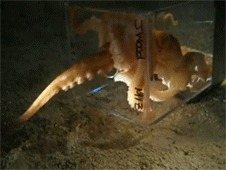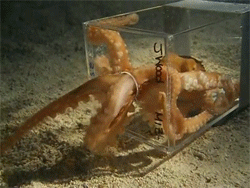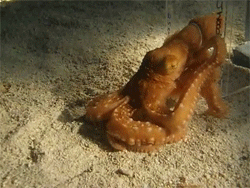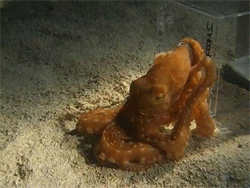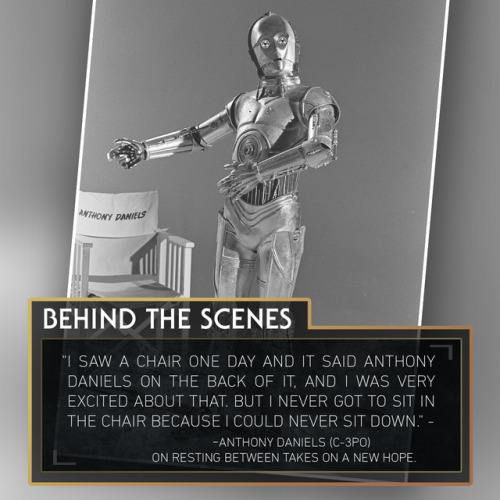The History Of Hiragana
The History of Hiragana
In Japanese language, we have three types of letters, Kanji, Hiragana, Katakana.
Hiragana’s root is from old Ivrit and Palmyra letters.

The first column: Phoenician alphabet The second column: Ostracon The third column: Old Aramaic The forth column: Imperial Aramaic The fifth column: Dead Sea scrolls The sixth column: Palmyrene script The seventh column: Palmyra

The first column: Hiragana The second column: Consonants The third column: Vowels The forth column: combined with the consonant and the vowel The fifth column: Sousho-tai (a hand writing style) The sixth column: Kanji
More Posts from Philosophical-amoeba and Others
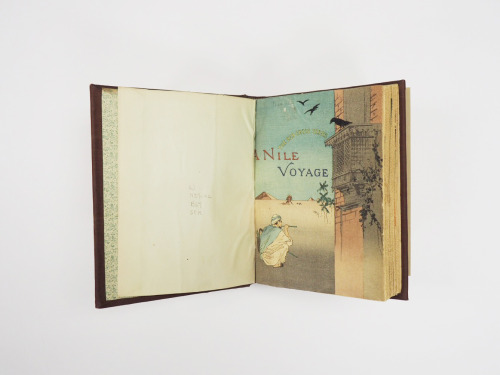
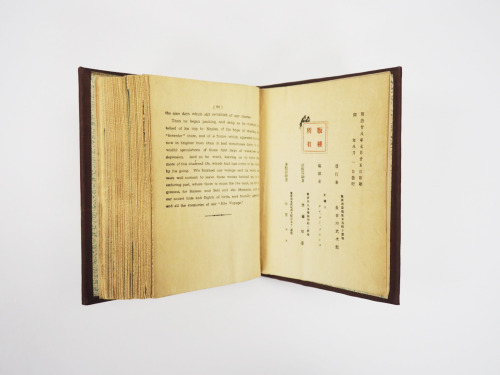
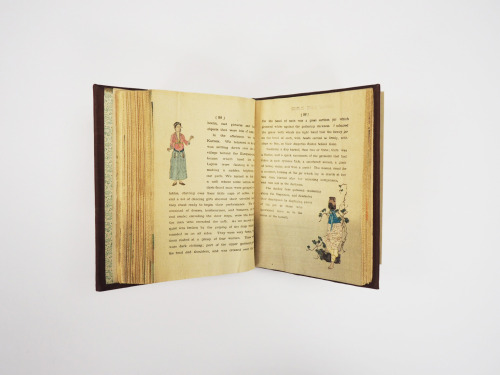
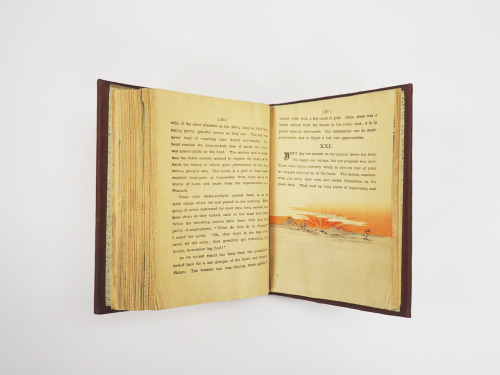
Ancient Egypt as seen through western eyes is mostly monumental and remote, distant in time and overwhelming in scale. The earliest western illustrations and photographs of Egypt regularly emphasized size and stillness; romantic artists of the nineteenth century frequently placed people in vast desert landscapes—the figures small and insignificant, lost in the deep antiquity of an unchanging land.
This grand vision of Egypt is so firmly fixed in western culture that discovering a different interpretation comes as a revelation. Fortunately, the Brooklyn Museum Wilbour Library of Egyptology owns a rare treasure that offers an alternate view. A Nile Voyage of Recovery, by Charles and Susan Bowles was published in Japan by Hasegawa Takejirō [長谷川武次郎 in 1896. Hasegawa was Japanese publisher active in the late nineteenth century who specialized in books in European languages, often for Japan’s tourist trade and resident foreign community, which included many English missionaries. The volume is part of the Red Cross series. During this time period, the Red Cross was active in setting up libraries and creating publications for soldiers in hospitals and recovery centers around the world.
Many of Hasegawa’s early books were in the form of chirimen-bon (ちりめん本) or crêpe paper books. Chirimen, or crepe, is a Japanese textile with a soft, slightly wrinkly texture that’s often used in Japan to make kimonos, or for wrapping cloth. Hasegawa used the material to produce small, delicate books that can be held in the hand with the pages unfolding easily like fabric.
Our chirimen-bon of A Nile Voyage of Recovery is illustrated with graceful, color woodblock prints of Egyptian scenes and adorned with exquisite typography. The images are gentle and intimate, emphasizing details and delicate color. Even a portrayal of the great pyramid gives more page-room to rays of light and the sun rather than the monuments. The Sphinx does not dominate; it’s rather an integral part of the landscape.
Why study this human-scale Egypt? Because the purpose of art after all is to unsettle the conventional view—and whenever we see the world through other eyes, we see something new.
Posted by Roberta Munoz Photos by Brooke Baldeschwiler

(Image caption: If this picture makes you feel uncomfortable, you feel empathic pain. This sensation activates the same brain regions as real pain. © Kai Weinsziehr for MPG)
The anatomy of pain
Grimacing, we flinch when we see someone accidentally hit their thumb with a hammer. But is it really pain we feel? Researchers at the Max Planck Institute for Human Cognitive and Brain Sciences in Leipzig and other institutions have now proposed a new theory that describes pain as a multi-layered gradual event which consists of specific pain components, such as a burning sensation in the hand, and more general components, such as negative emotions. A comparison of the brain activation patterns during both experiences could clarify which components the empathic response shares with real pain.
Imagine you’re driving a nail into a wall with a hammer and accidentally bang your finger. You would probably injure finger tissue, feel physical distress, focus all your attention on your injured finger and take care not to repeat the misfortune. All this describes physical and psychological manifestations of “pain” – specifically, so-called nociceptive pain experienced by your body, which is caused by the stimulation of pain receptors.
Now imagine that you see a friend injure him or herself in the same way. You would again literally wince and feel pain, empathetic pain in this case. Although you yourself have not sustained any injury, to some extent you would experience the same symptoms: You would feel anxiety; you may recoil to put distance between yourself and the source of the pain; and you would store information about the context of the experience in order to avoid pain in the future.
Activity in the brain
Previous studies have shown that the same brain structures – namely the anterior insula and the cingulate cortex – are activated, irrespective of whether the pain is personally experienced or empathetic. However, despite this congruence in the underlying activated areas of the brain, the extent to which the two forms of pain really are similar remains a matter of considerable controversy.
To help shed light on the matter, neuroscientists, including Tania Singer, Director at the Max Planck Institute for Human Cognitive and Brain Sciences in Leipzig, have now proposed a new theory: “We need to get away from this either-or question, whether the pain is genuine or not.”
Instead, it should be seen as a complex interaction of multiple elements, which together form the complex experience we call “pain”. The elements include sensory processes, which determine, for example, where the pain stimulus was triggered: in the hand or in the foot? In addition, emotional processes, such as the negative feeling experienced during pain, also come into play. “The decisive point is that the individual processes can also play a role in other experiences, albeit in a different activation pattern,” Singer explains – for example, if someone tickles your hand or foot, or you see images of people suffering on television. Other processes, such as the stimulation of pain receptors, are probably highly specific to pain. The neuroscientists therefore propose comparing the elements of direct and empathetic pain: Which elements are shared and which, by contrast, are specific and unique to the each form of pain?
Areas process general components
A study that was published almost simultaneously by scientists from the Max Planck Institute for Human Cognitive and Brain Sciences and the University of Geneva has provided strong proof of this theory: They were able to demonstrate for the first time that during painful experiences the anterior insula region and the cingulate cortex process both general components, which also occur during other negative experiences such as disgust or indignation, and specific pain information – whether the pain is direct or empathic.
The general components signal that an experience is in fact unpleasant and not joyful. The specific information, in turn, tells us that pain – not disgust or indignation – is involved, and whether the pain is being experienced by you or someone else. “Both the nonspecific and the specific information are processed in parallel in the brain structures responsible for pain. But the activation patterns are different,” says Anita Tusche, also a neuroscientist at the Max Planck Institute in Leipzig and one of the authors of the study.
Thanks to the fact that our brain deals with these components in parallel, we can process various unpleasant experiences in a time-saving and energy-saving manner. At the same time, however, we are able register detailed information quickly, so that we know exactly what kind of unpleasant event has occurred – and whether it affects us directly or vicariously. “The fact that our brain processes pain and other unpleasant events simultaneously for the most part, no matter if they are experienced by us or someone else, is very important for social interactions,” Tusche says, “because it helps to us understand what others are experiencing.”
List of Free Science Books
Here’s an alphabetical list of all available free books. Note that many of the links will bring you to an external page, usually with more info about the book and the download links. Also, the links are updated as frequently as possible, however some of them might be broken. Broken links are constantly being fixed. In case you want to report a broken link, or a link that violates copyrights, use the contact form.
A
A Beginner’s Guide to Mathematica
A Brief Introduction to Particle Physics
A First Course in General Relativity
A New Astronomy
A No-Nonsense Introduction to General Relativity
A Popular History of Astronomy During the Nineteenth Century, Fourth Edition
A Review of General Chemistry
A Simple Guide to Backyard Astronomy
A Text Book for High School Students Studying Physics
A Tour of Triangle Geometry
About Life: Concepts in Modern Biology
Acoustic Emission
Adaptive Control
Advanced Calculus
Advanced Learning
Advanced Mathematics for Engineers
Advanced Microwave Circuits and Systems
Advanced Technologies
Advances in Computer Science and IT
Advances in Evolutionary Algorithms
Advances in Geoscience and Remote Sensing
Advances in Haptics
Advances in Human Computer Interaction
Age of Einstein
Aging by Design
AMPL: A Modeling Language for Mathematical Programming
An Introduction to Elementary Particles
An Introduction to Higher Mathematics
An Introduction to Many Worlds in Quantum Computation
An Introduction to Mathematical Reasoning
An Introduction to Mathematics
An Introduction to Proofs and the Mathematical Vernacular
An Introduction to Relativistic Quantum Mechanics
Analysis 1 (Tao T)
Analysis 2 (Tao T)
Analytic Functions
Astronomical Discovery
Astronomy for Amateurs
Astronomy Today
Astronomy with an Opera-Glass
Automation and Robotics
B
Basic Algebra, Topology and Differential Calculus
Basic Concepts of Mathematics
Basic Concepts of Thermodynamics
Basic Concepts of Thermodynamics Chapter 1
Basic Ideas in Chemistry
Basic Math: Quick Reference eBook
Basic Mathematics for Astronomy
Basic Physics
Basic Positional Astronomy
Basic Principles of Classical and Statistical Thermodynamics
Basic Principles of Physics
Basics of Physics
Beginner’s Botany
Biochemistry
Biochemistry (practice book)
Biology
Board Notes for Particle Physics
Book of Proof
C
Calculus
Calculus Based Physics
Celestial Navigation, Elementary Astronomy, Piloting
Circuit QED — Lecture Notes
Classical Dynamics
Classical Geometry
Classical Mechanics
Climate Models
Collaborative Statistics
College Algebra
Complex Analysis
Computational Geometry
Computational Introduction to Number Theory and Algebra
Computational Physics with Python
Conceptual Physics
Consistent Quantum Theory
Cook-Book Of Mathematics
College Physics
Crude Oil Emulsions- Composition Stability and Characterization
Curiosities of the Sky
D
Decoherence: Basic Concepts and Their Interpretation
Do We Really Understand Quantum Mechanics?
Differential Equations
Diophantine Analysis
Discover Physics
Dr. Donald Luttermoser’s Physics Notes
Dynamics and Relativity
E
Earthquake Research and Analysis
Earthquake-Resistant Structures – Design, Assessment and Rehabilitation
Einstein for Everyone
Electromagnetic Field Theory
Elementary Mathematical Astronomy
Elementary Linear Algebra
Elementary Particle Physics in a Nutshell
Elementary Particles in Physics
Elements of Astrophysics
Embedded Systems – Theory and Design Methodology
Encyclopaedia of Mathematics
Encyclopedia of Astrophysics
Engineering Mathematics 1
Engineering Mathematics with Tables
Essential Engineering Mathematics
Essential Physics
Exoplanet Observing for Amateurs
Experimental Particle Physics
F
Fields
Foundations of Nonstandard Analysis
Frequently Asked Questions about Calendars
Fundamental Concepts of Mathematics
Fundamentals of Analysis (Chen W.W.L)
Further Mathematical Methods
Fusion Physics
G
General Chemistry
General Relativity
General Relativity
Geometric Asymptotics
Geometry and Group Theory
Geometry and Topology
Geometry Formulas and Facts
Geometry Study Guide
Geometry, Topology and Physics
Geometry, Topology, Localization and Galois Symmetry
Great Astronomers
H
Handbook of Formulae and Physical Constants
High School Mathematics Extensions
Higher Mathematics for Engineers and Physicists
History of Astronomy
Homeomorphisms in Analysis
How to Use Experimental Data to Compute the Probability of Your Theory
I
Intelligent Systems
Intrinsic Geometry of Surfaces
Introduction to Astronomy and Cosmology
Introduction to Cancer Biology
Introduction to Chemistry
Introduction to Cosmology
Introduction to Elementary Particles
Introduction to General Relativity
Introduction To Finite Mathematics
Introduction to Particle Physics Notes
Introduction to PID Controllers
Introduction to Quantum Mechanics with Applications to Chemistry
Introduction to Quantum Noise, Measurement and Amplification
Introduction to Social Network Methods
Introduction to String Field Theory
Introduction to the Time Evolution of Open Quantum Systems
Introduction to Quantum Mechanics
Introductory Computational Physics
Introductory Physics 1
Introductory Physics 2
K
Kinetic Theory
L
Laboratory Manual for Introductory Physics
Laws of Physics
Learn Physics Today
Lecture Notes in Discrete Mathematics
Lecture Notes in Quantum Mechanics
Lecture Notes in Nuclear and Particle Physics
Lecture Notes in Particle Physics
Lecture Notes on General Relativity
Lectures on Astronomy, Astrophysics, and Cosmology
Lectures on Particle Physics
Lectures on Riemann Zeta-Function
Light and Matter
M
Mag 7 Star Atlas Project
Many Particle Physics
Math Alive
Mathematical Analysis I(Zakon E)
Mathematical Biology
Mathematical Methods
Mathematical Methods 1
Mathematical Methods for Physical Sciences
Mathematical Methods of Engineering Analysis
Mathematics, Basic Math and Algebra
Mathematics for Computer Science
Mathematics for Computer Science
Mathematics for Computer Scientists
Mathematics For Engineering Students
Mathematics Formulary
Motion Mountain
Music: A Mathematical Offering
Mysteries of the Sun
N
Natural Disasters
New Frontiers in Graph Theory
Noise Control, Reduction and Cancellation Solutions in Engineering
Nondestructive Testing Methods and New Applications
Nonlinear Optics
Notes on Coarse Geometry
Notes on Elementary Particle Physics
Notes on Quantum Mechanics
O
Observing the Sky from 30S
On Particle Physics
Operating Systems: Three Easy Pieces
P
Particle Physics Course Univ. Cape Town
Particle Physics Lecture Notes
People’s Physics Book
Perspectives in Quantum Physics: Epistemological, Ontological and Pedagogical
Photons, Schmotons
Physics Lectures
Physics Tutorials
Physics Study Guides
Pioneers of Science
Practical Astronomy
Practical Astronomy for Engineers
Preparing for College Physics
Primer Of Celestial Navigation
Principal Component Analysis – Multidisciplinary Applications
Publications of the Astronomical Society of the Pacific Volume 1
Q
Quantum Dissipative Systems
Quantum Field Theory
Quantum Fluctuations
Quantum Information Theory
Quantum Magnetism
Quantum Mechanics
Quantum Mechanics
Quantum Mechanics: A Graduate Course
Quantum Mechanics: An Intermediate Level Course
Quantum Notes
Quantum Physics Notes
Quantum Theory of Many-Particle Systems
Quantum Transients
R
Recreations in Astronomy
Relativistic Quantum Dynamics
Relativity: The Special and General Theory
Review of Basic Mathematics
Riemann Surfaces, Dynamics and Geometry Course Notes
S
Short History of Astronomy
Sintering of Ceramics – New Emerging Techniques
Solitons
Some Basic Principles from Astronomy
Special Relativity
Spherical Astronomy
Star-Gazer’s Hand-Book
Statistical Physics
Street-Fighting Mathematics
String Theory
Structures of Life
Supernova Remnants: The X-ray Perspective
Superspace: One Thousand and One Lessons in Supersymmetry
System of Systems
T
The Astrobiology Primer: An Outline of General Knowledge
The Astronomy and the Bible
The Astronomy of the Bible: An Elementary Commentary on the Astronomical References of Holy Scripture
The Basic Paradoxes of Statistical Classical Physics and Quantum Mechanics
The Beginning and the End
The Beginning and the End of the Universe
The Complete Idiot’s Guide to the Sun
The Convenient Setting of Global Analysis
The Eightfold Way: The Beauty of Klein’s Quartic Curve
The General Theory of Relativity
The Geology of Terrestrial Planets
The Geometry of the Sphere
The Handbook of Essential Mathematics
The Moon: A Full Description and Map of its Principal Physical Features
The Open Agenda
The Origin of Mass in Particle Physics
The Particle Detector Brief Book
The Physics Hypertextbook
The Physics of Quantum Mechanics
The Planet Mars
The Small n Problem in High Energy Physics
The Story of Eclipses
The Story of the Heavens
The Structure of Life
The Wonder Book of Knowledge
The World According to the Hubble Space Telescope
The Zij as-Sanjari of Gregory Chioniades (June 27, 2009)
Three Dimensional Geometry
U
Understanding Physics
Unfolding the Labyrinth
Utility of Quaternions in Physics
Uses of Astronomy
First genetic proof that women were Viking warriors

New DNA evidence uncovered by researchers at Uppsala University and Stockholm University shows that there were in fact female Viking warriors. The remains of an iconic Swedish Viking Age grave now reveal that war was not an activity exclusive to males – women could be found in the higher ranks at the battlefield.
The study was conducted on one of the most well-known graves from the Viking Age, a mid-10th century grave in Swedish Viking town Birka. The burial was excavated in the 1880s, revealing remains of a warrior surrounded by weapons, including a sword, armour-piercing arrows, and two horses. There was also a full set of gaming pieces and a gaming board.
The morphology of some skeletal traits have long suggested that she was a woman, but since this grave has been the type specimen for a Viking warrior for over a century, it has always been assumed to have belonged to a male Viking. Now, geneticists, archaeogeneticists and archaeologists have worked together and solved the mystery. DNA retrieved from the skeleton demonstrates that the individual carried two X chromosomes and no Y chromosome. Read more.

(Image caption: This type of electrocorticography (ECoG) grid, which is implanted in patients about to undergo epilepsy surgery, enables researchers to record and transmit electrical signals to and from the surface of the brain. Credit: Mark Stone/University of Washington)
For the first time in humans, researchers use brain surface stimulation to provide ‘touch’ feedback to direct movement
In the quest to restore movement to people with spinal cord injuries, researchers have focused on getting brain signals to disconnected nerves and muscles that no longer receive messages that would spur them to move.
But grasping a cup or brushing hair or cooking a meal requires other feedback that has been lost in amputees and individuals with paralysis — a sense of touch. The brain needs information from a fingertip or limb or external device to understand how firmly a person is gripping or how much pressure is needed to perform everyday tasks.
Now, University of Washington researchers at the National Science Foundation Center for Sensorimotor Neural Engineering (CSNE) have used direct stimulation of the human brain surface to provide basic sensory feedback through artificial electrical signals, enabling a patient to control movement while performing a simple task: opening and closing his hand.
It’s a first step towards developing “closed loop,” bi-directional brain-computer interfaces (BBCIs) that enable two-way communication between parts of the nervous system. They would also allow the brain to directly control external prosthetics or other devices that can enhance movement — or even reanimate a paralyzed limb — while getting sensory feedback.
The results of this research will be published in the Oct.-Dec. 2016 issue of IEEE Transactions on Haptics. An early-access version of the paper is available online.
“We were able to provide a baseline degree of sensory feedback by direct cortical stimulation of the brain,” said lead author and UW bioengineering doctoral student Jeneva Cronin. “To our knowledge this is the first time it’s been done in a human patient who was awake and performing a motor task that depended on that feedback.”
The team of bioengineers, computer scientists and medical researchers from the CSNE and UW’s GRIDLab used electrical signals of different current intensities, dictated by the position of the patient’s hand measured by a glove he wore, to stimulate the patient’s brain that had been implanted with electrocorticographic (ECoG) electrodes. The patient then used those artificial signals delivered to the brain to “sense” how the researchers wanted him to move his hand.
“The question is: Can humans use novel electrical sensations that they’ve never felt before, perceive them at different levels and use this to do a task? And the answer seems to be yes,” said co-author and UW bioengineering doctoral student James Wu. “Whether this type of sensation can be as diverse as the textures and feelings that we can sense tactilely is an open question.”
They would also allow the brain to directly control external prosthetics or other devices that can enhance movement — or even reanimate a paralyzed limb — while getting sensory feedback.
It’s difficult for a person to mimic natural movements — whether using a prosthetic device or a limb that has become disconnected from the brain by neurological injury — without sensation. Though there are devices to assist patients with paralysis or who have undergone amputations with basic function, being able to feel again ranks highly on their priorities, researchers said.
Restoring this sensory feedback requires developing an “artificial” language of electrical signals that the brain can interpret as sensation and incorporate as useful feedback when performing a task.
The UW CSNE team frequently works with patients about to undergo epilepsy surgery who have recently had an ECoG electrode grid implanted on the surface of their brain. For several days or weeks, doctors constantly monitor their brain activity to pinpoint the origin of their seizures before operating.
By consenting to participate in research studies during this period when their brain is “wired,” these patients enable researchers to answer basic neurological questions. They can test which parts of the brain are activated during different behaviors, what happens when a certain region of the brain’s cortex is stimulated and even how to induce brain plasticity to promote rehabilitation and healing across damaged areas.
The potential to use ECoG electrodes implanted on the surface of the brain in future prosthetic or rehabilitative applications offers several advantages — the signals are stronger and more accurate than sensors placed on the scalp, but less invasive than ones that penetrate the brain, as in a recent study by University of Pittsburgh researchers.
In the UW study, three patients wore a glove embedded with sensors that provided data about where their fingers and joints were positioned. They were asked to stay within a target position somewhere between having their hands open and closed without being able to see what that target position was. The only feedback they received about the target hand position was artificial electrical data delivered by the research team.
When their hands opened too far, they received no electrical stimulus to the brain. When their hand was too closed – similar to squeezing something too hard – the electrical stimuli was provided at a higher intensity.
One patient was able to achieve accuracies in reaching the target position well above chance when receiving the electrical feedback. Performance dropped when the patient received random signals regardless of hand position, suggesting that the subject had been using the artificial sensory feedback to control hand movement.
Providing that artificial sensory feedback in a way that the brain can understand is key to developing prosthetics, implants or other neural devices that could restore a sense of position, touch or feeling in patients where that connection has been severed.
“Right now we’re using very primitive kinds of codes where we’re changing only frequency or intensity of the stimulation, but eventually it might be more like a symphony,” said co-author Rajesh Rao, CSNE director and UW professor of computer science & engineering.
“That’s what you’d need to do to have a very natural grip for tasks such as preparing a dish in the kitchen. When you want to pick up the salt shaker and all your ingredients, you need to exert just the right amount of pressure. Any day-to-day task like opening a cupboard or lifting a plate or breaking an egg requires this complex sensory feedback.”




I made this to put on my wall for revision, but I thought it might be helpful for some of you guys too so I thought I would share it!
Joan Beauchamp Procter: her best friend was a Komodo dragon and if that doesn’t entice you to read this, I don’t know what will
Joan Beauchamp Procter is a scientist every reptile enthusiast should admire.

Joan was an incredibly intelligent young woman who was chronically ill (and as a result of her chronic illness, physically disabled by her early thirties). Her health issues kept her from going to college, but that did not stop her from studying and keeping reptiles. She presented her first paper to the Zoological Society of London at the tender age of nineteen, and the society was so impressed that they hired her to help design their aquarium. In 1923, despite having no formal secondary education and despite being only 26 years old, she was hired as the London Zoo’s curator of reptiles. Now, that in and of itself is an awesome accomplishment, but Joan was absolutely not content to maintain the status quo. Nosiree, by the age of 26 Joan had already kept many exotic pets (including a crocodile!) and knew a thing or two about what needed to be done to improve their lives in captivity. So Joan got together with an architect, Edward Guy Dawber, and designed the world’s first building designed solely for the keeping of reptiles. She had some really, really great ideas. Her first big idea was to make the building differentially heated- different areas and enclosures would have different heat zones, instead of having the whole building heated to one warm temperature. She also set up aquarium lighting- the gallery itself was dark, with dim lights on individual enclosures to make things less stressful for the inhabitants. She also insisted on the use of special glass that didn’t filter out UVB. This meant that reptiles could synthesize vitamin D and prevented cases of MBD in her charges.

But advances in enclosure design weren’t Joan’s only contribution to reptile keeping. She was also one of the first herpetologists to study albinism in snakes- she was the first to publish an identification how albinism manifests in reptile eyes differently than in mammal eyes, and stressed the importance of making accurate color plates of reptiles during life because study specimens often lose pigmentation. She also was really hands-on with many species, including crocodiles, large constrictors, and monitor lizards. Joan had this idea that if you socialize an animal and get it used to handling, then when you need to give it a vet checkup, things tend to go a lot better. This really hadn’t been done with reptiles before. She was able to identify many unstudied diseases, thanks to her patient handling of live specimens, and by being patient and going slow, she managed to get a lot of very large, dangerous creatures to trust her. One of them (that we know of) even came to like her- a Komodo dragon named Sumbawa.

In 1928, two of the first Komodo dragons to be imported to Europe arrived at the London Zoo. One of them, named Sumbawa, came in with a nasty mouth infection. His first several months at the zoo were a steady stream of antibiotics and gentle care, and by the time he’d recovered enough for display, he had come to be tolerant of handling and human interaction. In particular, he seemed to be genuinely fond of Joan. She was their primary caretaker and wrote many of the first popular accounts of Komodo dragon behavior in captivity. While recognizing their lethal capacity, she also wrote about how smart they are and how inquisitive they could be. In her account published in The Wonders of Animal Life, she said that "they could no doubt kill one if they wished, or give a terrible bite" but also that they were “as tame as dogs and even seem to show affection.” To demonstrate this, she would take Sumbawa around on a leash and let zoo visitors interact with him. She would also hand-feed Sumbawa- pigeons and chickens were noted to be favorite food, as were eggs.
Joan died in 1931 at the age of 34. By that time she was Doctor Procter, as the University of Chicago had awarded her an honorary doctorate. Until her death, she still remained active with the Zoological Society of London- and she was still in charge of her beloved reptiles. Towards the end of her life, Joan needed a wheelchair. But that didn’t stop her from hanging out with her giant lizard friend. Sumbawa would walk out in front of the wheelchair or beside it, still on leash- she’d steer him by touching his tail. At her death, she was one of the best-known and respected herpetologists in the world, and her innovative techniques helped shape the future of reptile care.


March 24th 1944: The ‘Great Escape’
On this day in 1944, a group of Allied prisoners of war staged a daring escape attempt from the German prisoner of war camp at Stalag Luft III. This camp, located in what is now Poland, held captured Allied pilots mostly from Britain and the United States. In 1943, an Escape Committee under the leadership of Squadron Leader Roger Bushell of the RAF, supervised prisoners surreptitiously digging three 30 foot tunnels out of the camp, which they nicknamed ‘Tom’, ‘Dick’ and ‘Harry’. The tunnels led to woods beyond the camp and were remarkably sophisticated - lined with wood, and equipped with rudimentary ventilation and electric lighting. The successful construction of the tunnels was particularly impressive as the Stalag Luft III camp was designed to make it extremely difficult to tunnel out as the barracks were raised and the area had a sandy subsoil. ‘Tom’ was discovered by the Germans in September 1943, and ‘Dick’ was abandoned to be used as a dirt depository, leaving ‘Harry’ as the prisoners’ only hope. By the time of the escape, American prisoners who had assisted in tunneling had been relocated to a different compound, making the escapeees mostly British and Commonwealth citizens. 200 airmen had planned to make their escape through the ‘Harry’ tunnel, but on the night of March 24th 1944, only 76 managed to escape the camp before they were discovered by the guards. However, only three of the escapees - Norwegians Per Bergsland and Jens Müller and Dutchman Bram van der Stok - found their freedom. The remaining 73 were recaptured, and 50 of them, including Bushell, were executed by the Gestapo on Adolf Hitler’s orders, while the rest were sent to other camps. While the escape was generally a failure, it helped boost morale among prisoners of war, and has become enshrined in popular memory due to its fictionalised depiction in the 1963 film The Great Escape.
“Three bloody deep, bloody long tunnels will be dug – Tom, Dick, and Harry. One will succeed!” - Roger Bushell
-
 dorianwrites liked this · 1 year ago
dorianwrites liked this · 1 year ago -
 tomatoman liked this · 1 year ago
tomatoman liked this · 1 year ago -
 king-pothead-blog liked this · 7 years ago
king-pothead-blog liked this · 7 years ago -
 phoenicianphaith-blog liked this · 7 years ago
phoenicianphaith-blog liked this · 7 years ago -
 phoenicianphaith-blog reblogged this · 7 years ago
phoenicianphaith-blog reblogged this · 7 years ago -
 thumbkisses reblogged this · 8 years ago
thumbkisses reblogged this · 8 years ago -
 excellentblog liked this · 8 years ago
excellentblog liked this · 8 years ago -
 prorochestvo liked this · 8 years ago
prorochestvo liked this · 8 years ago -
 the-linquisition reblogged this · 8 years ago
the-linquisition reblogged this · 8 years ago -
 asimplelover liked this · 8 years ago
asimplelover liked this · 8 years ago -
 alex333ccc liked this · 8 years ago
alex333ccc liked this · 8 years ago -
 shehasathree reblogged this · 8 years ago
shehasathree reblogged this · 8 years ago -
 jpaxton89725-blog liked this · 8 years ago
jpaxton89725-blog liked this · 8 years ago -
 swiftandsilentmurmmuration liked this · 8 years ago
swiftandsilentmurmmuration liked this · 8 years ago -
 whowantstobeaphd reblogged this · 8 years ago
whowantstobeaphd reblogged this · 8 years ago -
 tgttm reblogged this · 8 years ago
tgttm reblogged this · 8 years ago -
 drasticandsarcastic liked this · 8 years ago
drasticandsarcastic liked this · 8 years ago -
 philosophical-amoeba reblogged this · 8 years ago
philosophical-amoeba reblogged this · 8 years ago -
 mynameisnotthepoint liked this · 8 years ago
mynameisnotthepoint liked this · 8 years ago -
 kitchenclubmeetings liked this · 8 years ago
kitchenclubmeetings liked this · 8 years ago -
 japandreamthoughts liked this · 8 years ago
japandreamthoughts liked this · 8 years ago -
 shinybeetle liked this · 8 years ago
shinybeetle liked this · 8 years ago -
 lizardsquid liked this · 8 years ago
lizardsquid liked this · 8 years ago -
 janwo liked this · 8 years ago
janwo liked this · 8 years ago -
 linguisten reblogged this · 8 years ago
linguisten reblogged this · 8 years ago -
 margareetling liked this · 8 years ago
margareetling liked this · 8 years ago -
 rendakuenthusiast reblogged this · 8 years ago
rendakuenthusiast reblogged this · 8 years ago -
 floppergostic liked this · 8 years ago
floppergostic liked this · 8 years ago -
 phonetish reblogged this · 8 years ago
phonetish reblogged this · 8 years ago -
 overdevv reblogged this · 8 years ago
overdevv reblogged this · 8 years ago -
 everyoneiloveisdyingandicant reblogged this · 8 years ago
everyoneiloveisdyingandicant reblogged this · 8 years ago -
 abloatedtoad liked this · 8 years ago
abloatedtoad liked this · 8 years ago -
 cripples-r-us liked this · 8 years ago
cripples-r-us liked this · 8 years ago -
 karpadordiem liked this · 8 years ago
karpadordiem liked this · 8 years ago -
 sinbadism reblogged this · 8 years ago
sinbadism reblogged this · 8 years ago -
 geminusrufus liked this · 8 years ago
geminusrufus liked this · 8 years ago -
 our-pinkie-fan liked this · 8 years ago
our-pinkie-fan liked this · 8 years ago -
 sunistothesoulas liked this · 8 years ago
sunistothesoulas liked this · 8 years ago
A reblog of nerdy and quirky stuff that pique my interest.
291 posts
